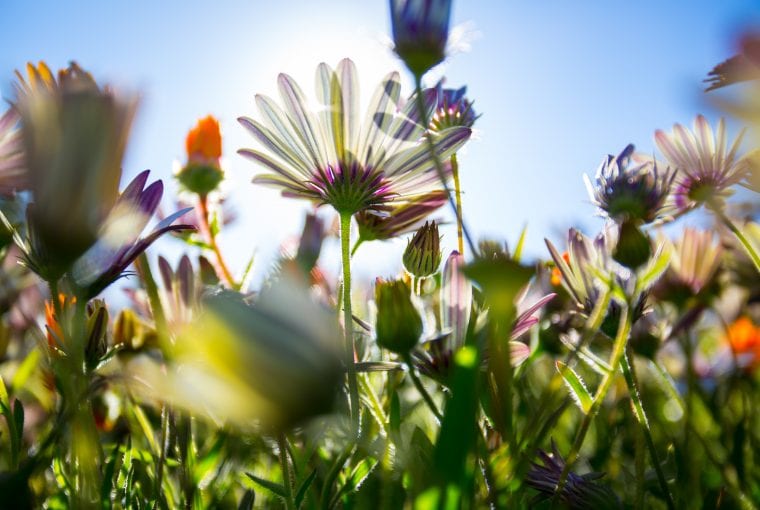And that means it is a good time to take stock of your garden
Pam Golding Properties spoke to the experts – Malcolm Hepplewhite, from Witkoppen Wildflower Nursery and Richard Morris, of Starke Ayres Garden Centre – about spring planting and water wise gardening.
1. Much mulch

Hepplewhite advises that spring is the ideal season to compost and fertilise your garden. Using a good organic fertiliser, spread a 2-3cm layer of compost across your flower beds.
Leave the compost as mulch, instead of digging it into the beds, to help retain more moisture in the soil.
Don’t forget to give your lawn a boost, says Morris. A slow release 5:1:5 organic fertiliser, such as Talborne, will do the trick and only needs to applied every three months. If your lawn is sparse, you can plant grass plugs now and lightly top dress.
2. Plant with a plan
By grouping plants according to their watering needs, you will use water more sparingly and ensure that plants that thrive in drier conditions are not over irrigated, says Hepplewhite. “Rather water well, less frequently. This way you will encourage the plants’ roots to grow deeper into the soil and not close to the surface where they can dry out.
Interesting fact: It’s not just the weather that heats up in summer. This is the growing season for chillies and there are a variety of cultivars to plant that will make your eyes water
3. Bulbs of joy

Morris says spring bulbs to plant now include Gladioli, Dahlia, Crocosmia, Polyanthus and Amaryllis.
It’s also a good idea to plant summer vegetable varieties such as tomatoes, patty pans, cucumber, squash, pumpkin and beans.
Also, dead head perennials, such as your daisies, Nemesias and Diascias to ensure they continue to flower.
4. Water wise plants
Indigenous plants are less prone to drier conditions that exotic plants. In Gauteng, the most popular choice of indigenous plants for spring are Freylinia tropica, Blue Honeybell, Anisodontea julii “Pink Lady”, Pink Lady Mallow and flowering succulents.
Starke Ayres’ water wise plant list

5. The water warrior combatting climate change
One of the magic components of any garden, but especially in areas where rainfall is scarce, is the Spekboom. It can basically grow anywhere – in the garden, in a container or indoors as a house plant. Few plants are as versatile, or as easy to grow, says Morris. “Apart from its use as a garden plant, it is a soil improver and combats soil erosion.”
Did you know? Spekboom can live for up to 200 years. It is also resistant and drought-resistant. Spekboom doesn’t burn, making it a hardy plant to withstand veld fires and great material for firebreak hedges.
Acting as a “carbon sponge”, the spekboom can isolate more than four tons of carbon dioxide per year, per hectare planted. It is unique in that it stores solar energy to perform photosynthesis at night, which of course produces the oxygen we need to survive.


